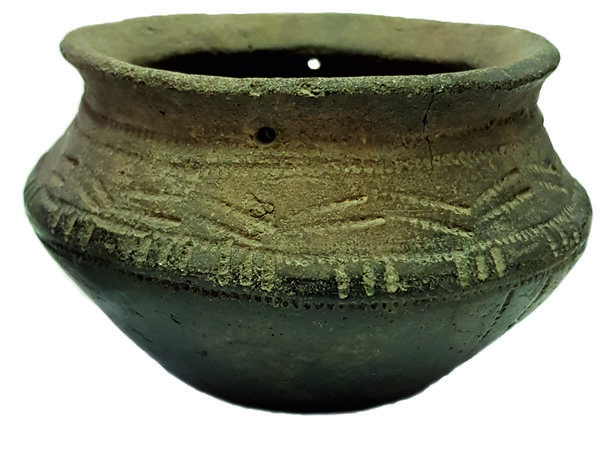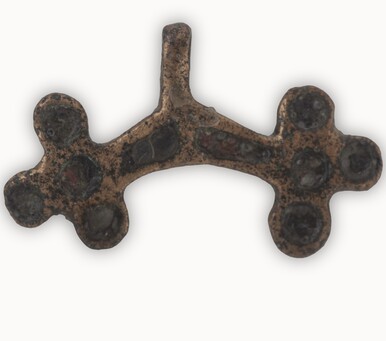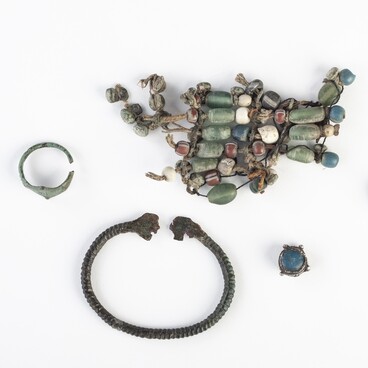The Kursk Regional Museum of Archaeology holds a clay vessel of the Abashevo archaeological culture. The Abashevo cultural and historical community was formed by the middle of the second millennium BC in the forest-steppe zone of Eastern Europe. Representatives of predominantly cattle-breeding population left the monuments, which are now found throughout the territory from the left bank of the Dnieper in the west (the basins of the Desna and Seim) to the Tobol River in the east. They are dated from the second to third quarters of the second millennium BC.
The vessel on display was part of funerary inventory. It was found in a burial, which was destroyed by peasant treasure hunters in the village of Nizhny Reutets (present-day Medvensky district of the Kursk region) at the beginning of the 20th century.
The vessel on display was part of funerary inventory. It was found in a burial, which was destroyed by peasant treasure hunters in the village of Nizhny Reutets (present-day Medvensky district of the Kursk region) at the beginning of the 20th century.



